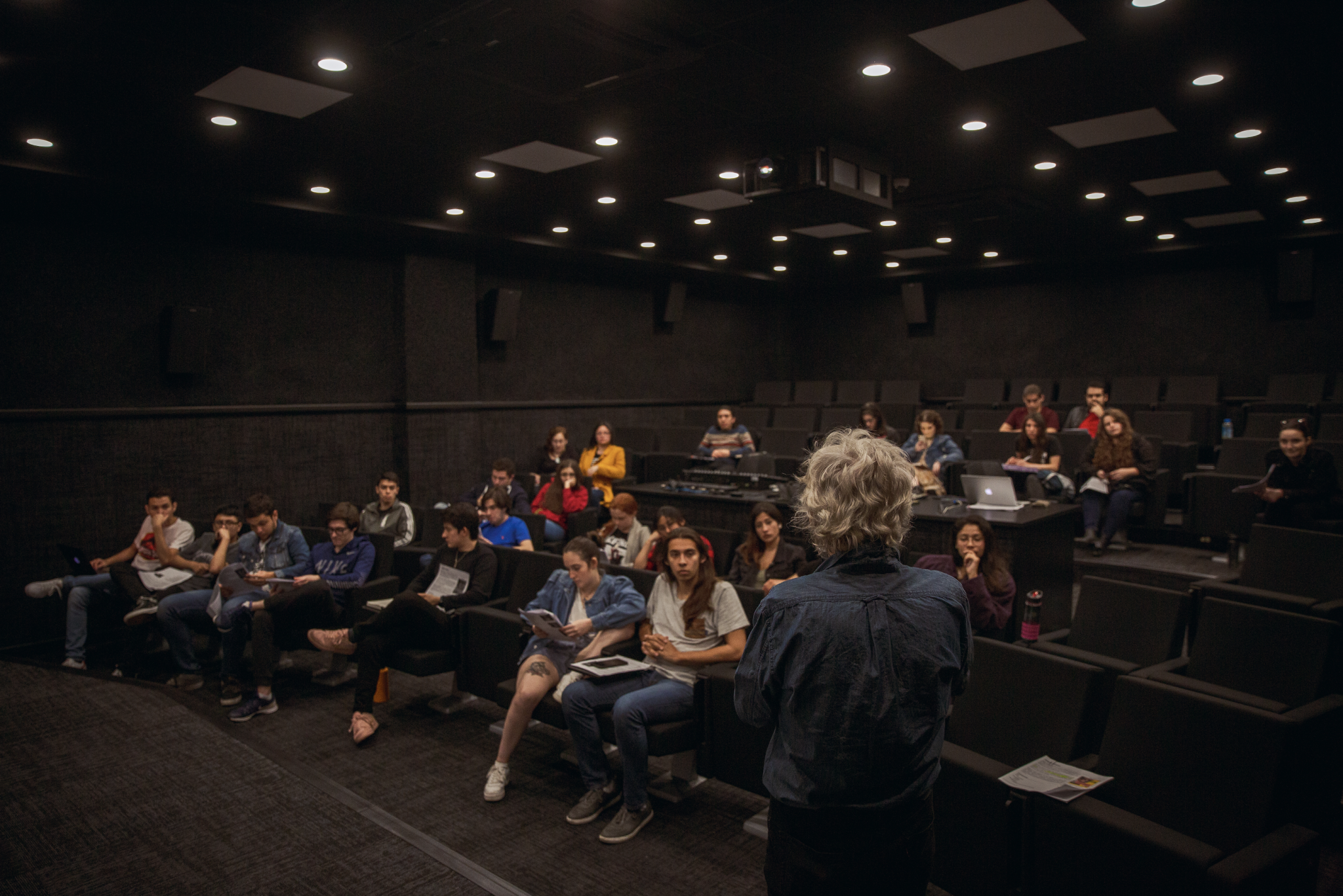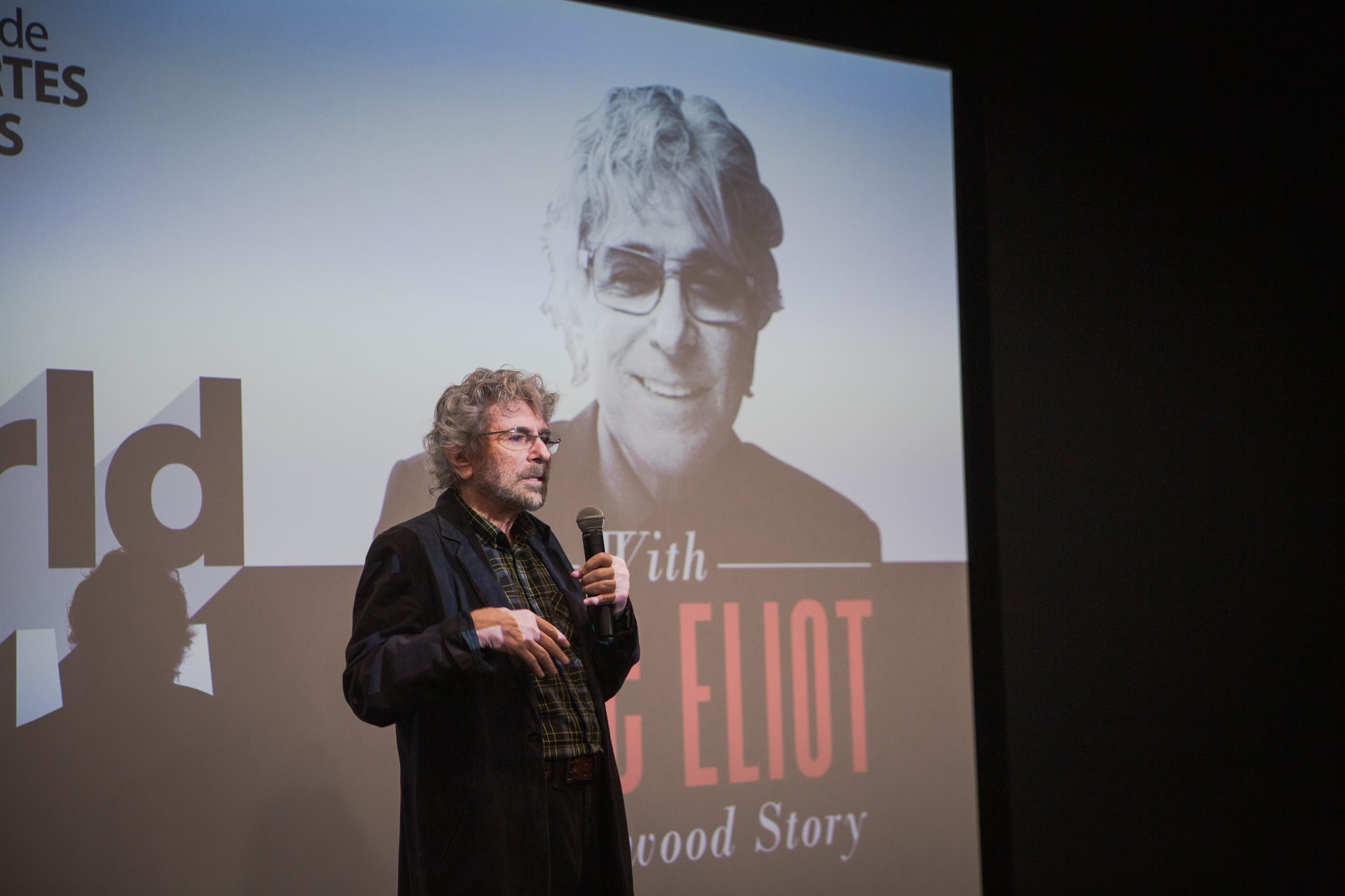
Marc Eliot: Teaching an Auteurist Approach to Cinema for Film Students at the UFM Film School
While attending Columbia University’s Graduate School of the Arts in pursuit of my Ph. D. in non-fiction writing, Film History and Criticism, I had the privilege of being mentored by Andrew Sarris, who first brought “Auteurism” to American film criticism (Auteurism is French for Author; the theory originated in Paris with the writers and editors of the seminal film magazine, “Cahiers du Cinema” – film notebooks.
The “Cahier” critics, including Truffaut, Rohmer, Melville, Chabrol and others, went on to become the filmmakers who helped define the French post-war ‘50s “New Wave,¨” that, in turn, influenced the ´60s era of independent personal filmmaking in America. The essential demands of Auteurism assert that the personality of the director is the dominant factor in understanding not just the “story” of a motion picture, but how that story is told. Auteurism, therefore, is concerned with, as much, if not more, of the “how” a film is made, rather than the “what,” or the plot. In a still-life painting of a bowl of fruit, we do not wonder what the pear tastes like, but marvel at the artist’s ability to paint that fruit, or how that painting is made.
To that end, we can say, ironically, that while film is a visual medium, it is not a visible one; the personality of the director is like an invisible character seen through his work, or his style of storytelling. To that end, Auteurism dictates that we should see every film of a director, to understand not only his, or her individual work, but where that film fits into the overall body of his catalog. For example, only viewing Van Gogh’s “Starry Night,” where the artist is not literally in the picture but his personality identifies it unmistakably as his, does not fully explain who Van Gogh was, his personality throughout his entire body of work, and where “Starry Night” fits into it. With a major artist, in painting, writing, and filmmaking, it is possible to trace the progression of his work, so that our understanding of where an individual film fits in it, the best way of identifying the development of his art by the progression of his personality film-to-film. A major artist in any field continually develops and refines his work; a minor artist’s work remains static, interchangeable with any other work of his.
In my residence at UFM´s film school, I have chosen several films from the “Pantheon” of American directors, those who have overcome the many obstacles of the studio system of corporate filmmaking, and managed to put their personalities into their films in ways original, striking, and memorable. I wanted to show my students films by directors they may not have been familiar with, in the hopes of expanding their knowledge of what is possible in making a film, and how important it is to develop a cinematically consistent personality in their movies. I have enjoyed their enthusiasm, input and reactions. As a writer, much of my work takes place alone, between my computer and my ideas. I love to occasionally get out and expand my world by sharing what I have learned with students, to externalize what is inside of me and to try to pass along all that I have learned on journey to becoming a successful American writer and biographer.
One final note: – The students and I briefly discussed the Academy Awards, and I noted that I thought it was not a great year for film, evidenced how “Parasite” won both Best International Film and Best Film of the Year. A student pointed out that “Parasite” gave her, and all the students, great hope that a foreign filmmaker could be welcomed into the world of Hollywood and rewarded for his efforts. I hadn’t thought of it that way.
Why do I love teaching and do it while I write? Because I continue to learn from students’ new ideas, feelings, and points of view. Teaching is also learning and I am forever a student of ideas.
————————————————————————————
About Marc Eliot:
Marc Eliot is the New York Times bestselling author of more than a dozen books on popular culture, among them the highly acclaimed biographies of Cary Grant and Jimmy Stewart, the award-winning Walt Disney: Hollywood’s Dark Prince, Down 42nd Street, Take It from Me (with Erin Brockovich), Down Thunder Road: The Making of Bruce Springsteen, To the Limit: The Untold Story of the Eagles, American Rebel: The Life of Clint Eastwood, and Death of a Rebel. He has written on the media and popular culture for numerous publications, including Penthouse, L.A. Weekly, and California Magazine. He divides his time among New York City, Woodstock, New York, and Los Angeles.
Marc is a visiting professor of UFM’s School of Film and Visual Media and is teaching the course World of Cinema: A Hollywood Story and the Master Class: Inside the Industry of Hollywood.













